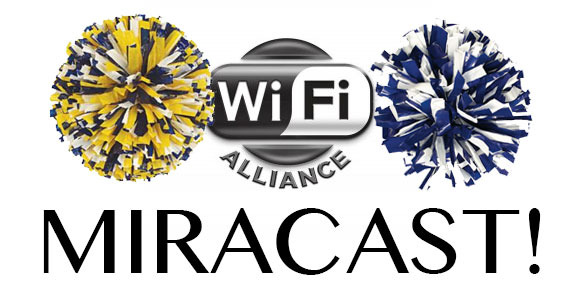How Does Android 4.2 Jelly Bean Wireless Display Mirroring Work?
If you're like me, the first time you heard of wireless display mirroring, your first question was – how? With Google's new Android 4.2 Jelly Bean+ operating system update, wireless mirroring is included in the code – but how does that work without the hardware to back it up? As it turns out, this whole situation has to do with Miracast wireless display sharing – an industry standard that allows your device to connect to larger device's displays using your wi-fi network as a middle-man.
With Miracast being an "industry standard", you can expect many brands to pick it up soon if they don't already have it integrated now. Miracast is a technology that's built in to devices – it's not a device in and of itself. Miracast certification has begun for devices of many kinds, so you can expect not just displays to have it integrated, but receivers that will plug in through your HDMI port instead – this working for legacy displays.
Manufacturer Adoption
One of the companies that has adopted Miracast as their wireless standard is NVIDIA – another is Texas Instruments. Have a peek at this hands-on video from Texas Instruments showing off Miracast working earlier this year.
Devices out Now
With devices like the Netgear Push2TV PTV3000 you'll be able to plug directly into whatever giant monitor you've got right now just so long as it's got an HDMI port – it connects to wi-fi on its own. A lovely Broadcom 5G Wi-fi chip was introduced all the way back in July of 2012 that set up for the wireless display future – that future being now, of course. The Nexus 10 (by Samsung) and the Nexus 4 (by LG) will both be released with Android 4.2 which will have Miracast capabilities built-in.

The Future
The future can actually be yours right this second if you have a way of getting ahold of a device with Android 4.2 on it – if it's an official working build, of course – as well as a Miracast-capable display. They do exist on the market today and they're in stores right this second. In the very near future – and throughout 2013 and forward, we must expect, Miracast will be adopted by many, many television sets as well as displays of all kinds. More wireless dongles will be created, and Android devices from all manner of manufacturers will be able to make use of this technology.
LG has dedicated themselves to Miracast for the future – that's one brand guaranteed to have the technology in essentially all their sets throughout 2013. With the folks at the Wi-Fi Alliance backing this certification for the whole industry, we'll see many more groups jump onboard soon. Doubly so now that Android is bringing support from the other end of the living room. Exciting times are ahead – no more getting up from the couch to plug your smartphone in to the HDMI cord for you!
